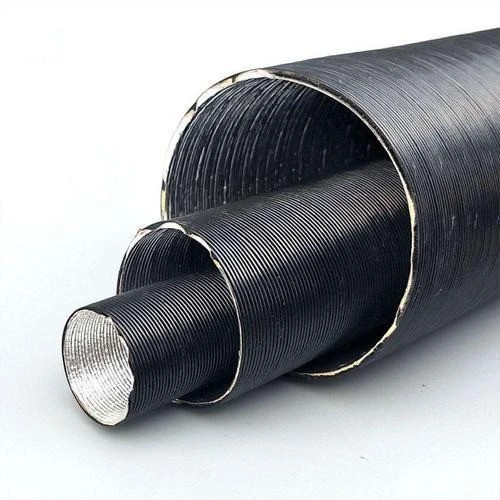pu air hose
Understanding PU Air Hose A Comprehensive Guide
In the world of pneumatic systems, choosing the right components can significantly affect the efficiency and reliability of your machinery. One crucial element that often gets overlooked is the air hose, specifically the PU air hose. This article will explore the characteristics, advantages, applications, and maintenance of PU air hoses.
What is a PU Air Hose?
PU air hose, or polyurethane air hose, is a type of flexible tubing used in pneumatic systems to transport compressed air. Made from thermoplastic polyurethane (TPU), these hoses are designed to withstand various conditions while maintaining excellent performance. They come in various diameters and lengths to cater to different applications and can be used in both industrial and recreational settings.
Characteristics of PU Air Hose
One of the standout features of PU air hoses is their exceptional flexibility. Unlike traditional rubber hoses, PU hoses can bend and maneuver around tight corners without compromising performance. This flexibility makes them perfect for dynamic applications where the hose must move or change direction frequently.
Additionally, PU air hoses are known for their excellent abrasion resistance. This durability ensures that the hose can withstand wear and tear in harsh environments, which is particularly important in industrial settings where equipment and materials can cause damage. Furthermore, PU hoses are resistant to oils, solvents, and chemicals, adding an extra layer of protection against environmental influences.
Another notable characteristic of PU air hoses is their lightweight nature. Unlike other materials that can be heavy and cumbersome, PU hoses are easy to handle, making them ideal for portable tools and systems that operators need to maneuver frequently.
Advantages of PU Air Hose
1. Lightweight and Flexible As mentioned earlier, PU hoses are lightweight and exceptionally flexible. This quality reduces operator fatigue, especially in workplaces where mobility and maneuverability are essential.
2. Durability The abrasion-resistant properties of PU hoses extend their lifespan, making them a cost-effective choice for businesses. Reduced downtime and fewer replacements contribute to overall operational efficiency.
3. Enhanced Performance PU air hoses maintain consistent airflow and pressure, which is vital for the efficiency of pneumatic tools. This stability helps ensure that tools operate at peak performance, which is crucial in fast-paced environments.
4. Versatility PU air hoses can be used in various applications, from construction sites to automotive workshops. Their adaptability allows them to handle different pressures and environments, making them suitable for a wide range of pneumatic tools and systems.
pu air hose

5. Resistance to Weather Conditions PU hoses can perform well under varying temperatures and weather conditions, demonstrating resilience and reliability in outdoor or unregulated environments.
Applications of PU Air Hose
PU air hoses are used across various industries and applications, including
- Automotive In repair shops, PU air hoses are commonly employed with pneumatic tools for tasks such as painting, sanding, and inflating tires. - Construction They are ideal for powering air compressors, nail guns, and other pneumatic tools essential in construction and building projects. - Manufacturing PU hoses play a critical role in automated manufacturing processes, where pneumatic systems drive machinery and equipment. - Medical and Dental Equipment Their clean and non-toxic properties make PU hoses suitable for medical applications where cleanliness and safety are paramount.
Maintenance of PU Air Hose
To maximize the lifespan and performance of your PU air hose, regular maintenance is essential. Here are some maintenance tips
1. Inspect Regularly Check the hose for any signs of wear, cracks, or abrasions. Early detection can prevent severe damage.
2. Clean the Hose Keep the hose clean and free of debris. This ensures that airflow remains uninterrupted and helps preserve the internal integrity of the hose.
3. Avoid Kinks When coiling the hose after use, avoid sharp bends or kinks that can damage the structure of the hose over time.
4. Store Properly When not in use, store the PU air hose in a cool, dry place away from direct sunlight to prevent degradation of the material.
Conclusion
PU air hoses are an excellent choice for any pneumatic application due to their flexibility, durability, and resistance to a wide array of environmental factors. By understanding their characteristics, advantages, and proper maintenance, users can ensure that they get the most out of their PU air hoses, ultimately leading to improved performance and longevity of their pneumatic systems. Whether you’re in the automotive, manufacturing, or construction industry, investing in quality PU air hoses will pay off in the long run.
-
Top Quality Oxy Acetylene Hoses for Sale Fit for Welding DemandsNewsJul.28,2025
-
The Future of Pneumatic Air Tubes in IndustryNewsJul.28,2025
-
Superior and Reliable LPG Hose Pipe Solutions for Every NeedNewsJul.28,2025
-
Exceptionally Durable and Versatile Premium Braided PVC TubingNewsJul.28,2025
-
Best Adapters for Connecting Garden Hose to PVC Pipe ConnectionsNewsJul.28,2025
-
The Essential Role of LPG Hoses in Safe and Efficient Gas DistributionNewsJul.16,2025














